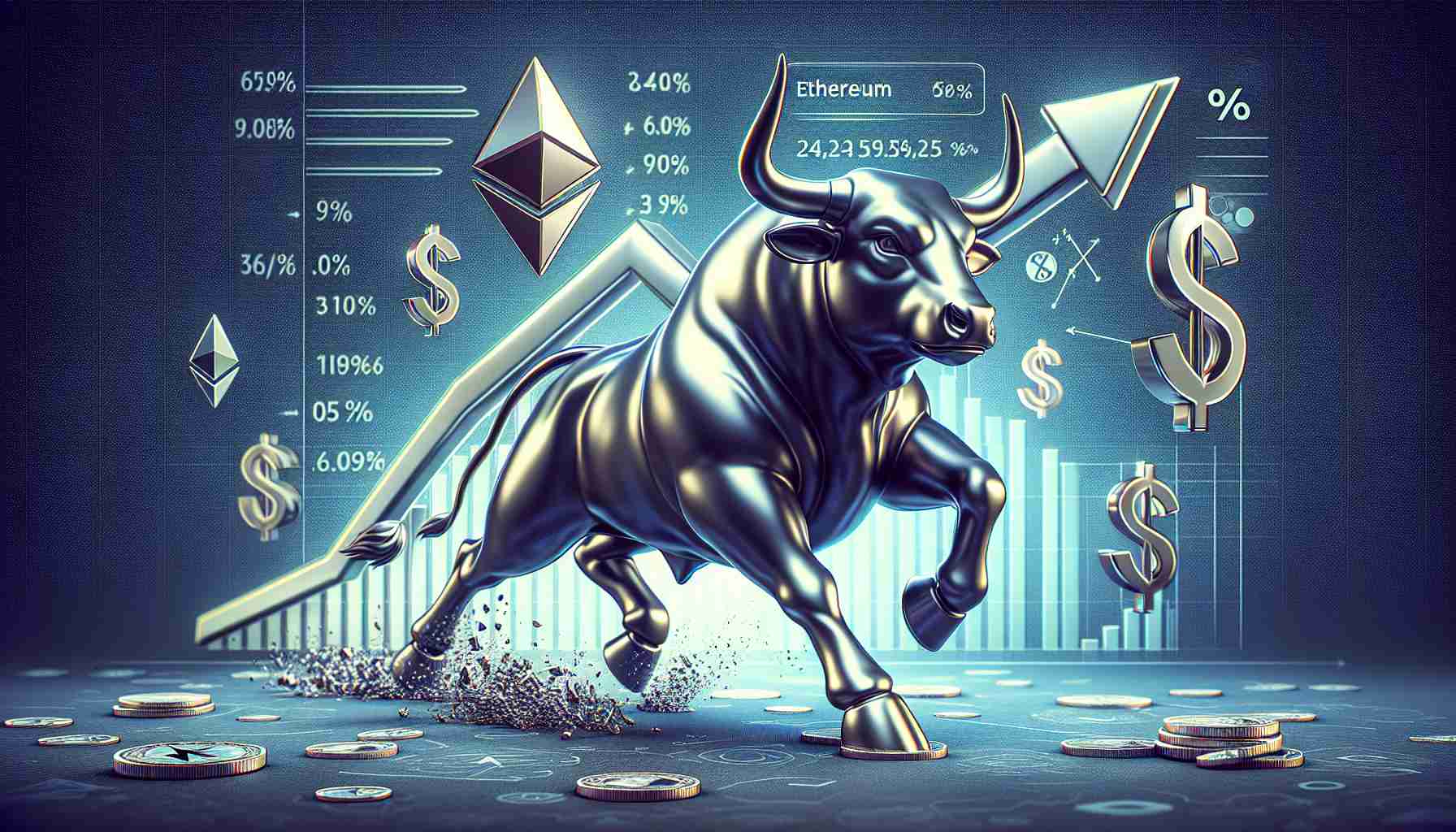Ethereum Reserves and Price Correlation Unearthed
Recent market behavior has observed Ethereum’s resilience, with a transformation into bullish territory within a 24-hour frame. Analysts have been closely monitoring the cryptocurrency whales, recognizing their substantial impact on the market dynamics, particularly for leading digital currencies such as Ethereum.
Cryptocurrency expert and analyst, BlitzzTrading from CryptoQuant, disclosed an intriguing pattern in Ethereum’s market flow. It’s stated that notable increases in Ethereum’s reserves on exchanges often result in a subsequent lowering of the cryptocurrency’s market value. Specifically, a sharp drop in reserves on the Bitmex platform was succeeded by a surge in Ethereum’s value.
Ethereum Market Sentiment and Indicators
While recent data from Glassnode pointed to a potential escalating trajectory for Ethereum’s price, Santiment provided a contrasting viewpoint, suggesting that substantial selling pressure exists. Despite this, metrics indicated a market sentiment of “fear,” which historically precipitates a potential price swell.
Ethereum’s trading position, currently at $3,428.69, came alongside a revelation that the Pi Cycle Top indicator had identified what might be the bottom of the market for Ethereum, forecasting an upcoming bull run. Should the market follow this trend, the possibility of Ethereum reaching benchmarks such as $5,000 looms on the horizon.
Market analysts have also been considering various indicators to gauge Ethereum’s market direction. With relative ambivalence in both Relative Strength Index (RSI) and Chaikin Money Flow (CMF), the Money Flow Index (MFI), in contrast, displayed a bullish configuration, suggesting Ethereum prices may continue to elevate. TradingView data has been critical in monitoring these trends.
Key Challenges and Controversies in Ethereum’s Market:
When analyzing the cryptocurrency market, and Ethereum in particular, several challenges and controversies may influence its performance. Here are some key points:
– Regulatory Scrutiny: Ethereum, like other cryptocurrencies, is under constant examination by financial regulators around the world. Regulatory decisions or news can have immediate effects on the market, either positive or negative.
– Scalability Issues: Ethereum has faced scalability challenges, which can affect transaction times and fees. Though the upgrade to Ethereum 2.0 is aimed at solving these problems by switching to a proof-of-stake protocol, there are uncertainties regarding the timing and impact of these changes.
– Market Volatility: Cryptocurrency markets are inherently volatile. Sharp price movements can be triggered by a variety of factors, including technological advancements, market sentiment, and macroeconomic trends that are difficult to predict.
Advantages and Disadvantages of Ethereum’s Market Movement:
Considering the bullish signs in Ethereum’s pricing, let’s weigh the potential advantages and disadvantages.
Advantages:
– Investment Opportunities: A bullish market can offer lucrative opportunities for traders and investors who enter the market at the right time.
– Growing Interest: Positive market trends often attract new investors and increase mainstream interest in Ethereum and blockchain technology.
– Network Growth: Bullish signs can stimulate the growth of the Ethereum network as more developers might be incentivized to build on the platform.
Disadvantages:
– Risk of Loss: While the signs might be bullish, the volatility of the crypto market means prices can suddenly drop, leading to significant losses.
– Possibility of Speculative Bubble: Rapid increases in value can sometimes lead to speculative bubbles, which might eventually burst, resulting in a rapid devaluation.
– FOMO-Induced Investment: A fear of missing out (FOMO) can lead inexperienced investors to make ill-timed investment decisions.
Relevant Questions and Answers:
– Q: What impact do cryptocurrency whales have on Ethereum’s price?
– A: Whales, or large holders of cryptocurrency, can significantly influence the market by buying or selling large amounts of Ethereum, thus potentially leading to price swings based on their activity.
– Q: How can market indicators predict future performance?
– A: Market indicators like RSI, CMF, and MFI analyze past and present data to gauge market conditions and investor behavior, which can help in predicting future price movements.
– Q: What role does market sentiment play in Ethereum’s price?
– A: Market sentiment can often be a predictor of future price movements. Sentiments of “fear” can sometimes be counterintuitive signals indicating that a price increase might be on the horizon.
– Q: What are the potential bull market predictions for Ethereum?
– A: Predictions regarding Ethereum reaching higher benchmarks, like $5,000, are speculative but are often based on the analysis of market trends and indicators.
– Q: How reliable is the Pi Cycle Top indicator in determining the market’s bottom?
– A: While no indicator is infallible, the Pi Cycle Top indicator has been historically used as a tool to estimate market peaks and troughs. Traders might use it in conjunction with other indicators for a more holistic approach.
For further information on Ethereum and the wider cryptocurrency market, you may visit reputable financial and cryptocurrency news websites. Always ensure the sources are credible and up to date.



